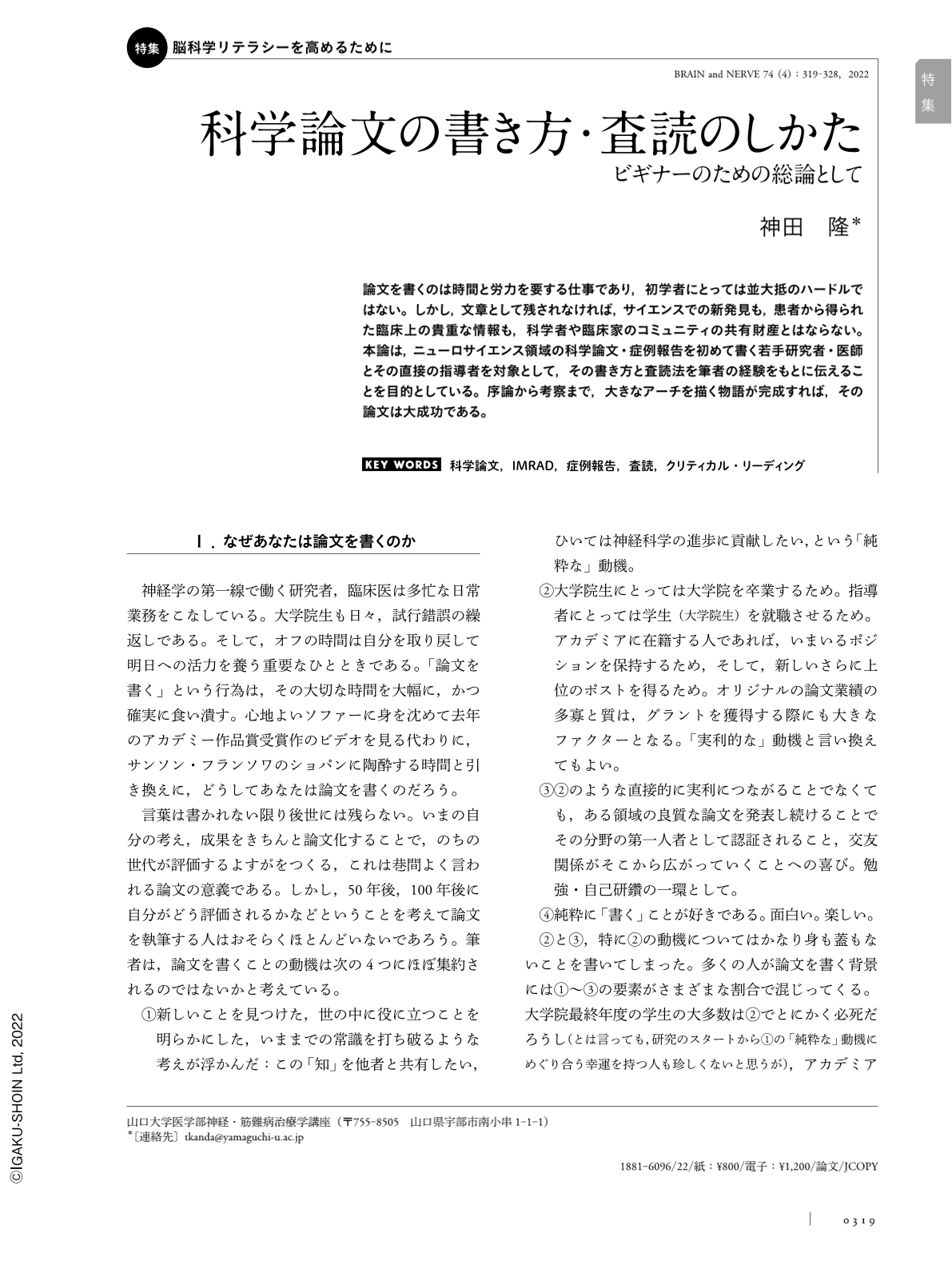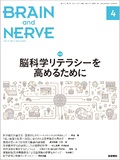Japanese
English
- 有料閲覧
- Abstract 文献概要
- 1ページ目 Look Inside
- 参考文献 Reference
論文を書くのは時間と労力を要する仕事であり,初学者にとっては並大抵のハードルではない。しかし,文章として残されなければ,サイエンスでの新発見も,患者から得られた臨床上の貴重な情報も,科学者や臨床家のコミュニティの共有財産とはならない。本論は,ニューロサイエンス領域の科学論文・症例報告を初めて書く若手研究者・医師とその直接の指導者を対象として,その書き方と査読法を筆者の経験をもとに伝えることを目的としている。序論から考察まで,大きなアーチを描く物語が完成すれば,その論文は大成功である。
Abstract
Writing a scientific paper is a time-consuming task that requires enormous effort, especially for beginners. However, novel scientific discoveries or useful clinical information obtained from a single patient may not be shared with the scientific and medical community if they are not published. This short article is intended to inform beginners and their tutors on how to write a scientific paper/case report in the field of neuroscience in Japanese. In addition, the methods used to conduct the peer review process are briefly mentioned. To write a scientific article, authors are required to use simple and direct expressions to avoid unnecessary misunderstandings. The introduction section must be attractive and flow from providing general to specific information, and the final discussion section should pertain to specific matter and end with general statements. A paper will be successful if the readers appreciate this “scientific arch” as a cardinal message of the article. Intensive reading of colleagues' papers also helps develop the beginners' writing skills. Although young researchers/physicians have rare opportunities to review scientific articles, peer-review experiences are useful for writing papers in the future.

Copyright © 2022, Igaku-Shoin Ltd. All rights reserved.


